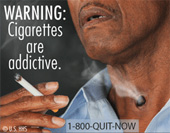- #1 Mansa Musa I – Net Worth $400 Billion
- #2 The Rothschild Family – $350 Billion
- #3 John D. Rockefeller – Net Worth $340 Billion
- #4 Andrew Carnegie – Net Worth $310 Billion
- #5 Nikolai Alexandrovich Romanov – Net Worth $300 Billion
- #6 Mir Osman Ali Khan – Net Worth $230 billion
- #7 William The Conqueror – Net Worth $229.5 Billion
- #8 Muammar Gaddafi – Net Worth $200 Billion
- #9 Henry Ford – Net Worth $199 Billion
- #10 Cornelius Vanderbilt – Net Worth $185 Billion
WikiBlog
Sunday, June 29, 2014
Top 25 Richest People of All Time:
Forbes 2014 Top 10 Richest People
Forbes on March 3, 2014 released its 2014 list of the World's Billionaires with Bill Gates, the co-founder of Microsoft Corporation claiming the top spot with an estimated net worth of over $70 B.
Below are the Names of Forbes Top 10 Richest People on the Planet.
Below are the Names of Forbes Top 10 Richest People on the Planet.
Sunday, June 15, 2014
Menstrual Migraines
Migraine headaches
are not life threatening but can be so disabling you sometimes feel you
are dwelling in a twilight state between life and death. The pain is
so crippling you can not participate in your every day life. My first
experience with migraine headaches
was in high school. An intelligent and talented friend of mine,
William, lost days of school at a time due to migraine headache pain.
He described how light and noise bothered him - he had to hide the
telephone under a pillow while confining himself to a dark room until
the pain subsided. I winced at his description of suffering, never
dreaming I too would fall prey to this malady - my weak spot.
Prepubescent boys and girls experience migraines with the same
prevalence. Women, however, are 3 times more likely than men to have
migraine headaches.
Warning to Smokers: Labels are Getting Tough
In case you haven’t heard, cigarettes are bad for you. Really,
really bad.
And soon, if you want to buy a pack, you’ll hear the warning
loud and clear. You’re going to be staring at the long-term effects of smoking:
from images of smoke pouring through a tracheotomy to dead bodies.
 An example of the new cigarette warning labels.
An example of the new cigarette warning labels.
These are examples of new, graphic warning labels that will
be required on all cigarette packs sold in the U.S. as part of legislation starting
in 2012.
Australian legislators took it one step further when they
recently passed a law regulating branding on cigarettes in an attempt to drive
down smoking rates in their country. Australia already has graphic warning
labels on their packs, but the new law would dedicate more than 80 percent of
the pack to the labels.
Environmental Factors Key to Autism
A new study published earlier this week will likely dump
buckets of fuel on the fire that rages in the debate over autism. For the past
decade, there has been ongoing vitriol spilled over the (potential)
relationship between early childhood vaccination and the development of autism.
The truth of the matter, however, is that there has been no definitive answer
to why some children become autistic and others do not. A recent study may help
guide researchers to resolve this open medical mystery.
According to this new study, conducted jointly by UCSF and
Stanford, and published Monday in the Archives of General Psychiatry,
environmental factors play a much larger role in causing autism than previously
thought—apparently, an even larger role than genetics.
Are Eating Disorders Contagious?
The media barrages us with images on a daily basis. That, we know.
Flip on the TV, go online, even stand in line at the grocery checkout and see
if you can avoid the not-so-subtle suggestions to lose weight, cut cravings,
and, overall, improve your general happiness and quality of life—fast and
simple.
Each day, on average, we’re exposed to about 5,000
advertising messages a day. That’s a lot. Considering that the
images winking on-screen or sedately stacked at the checkout counter
significantly shape our views on beauty and body image, all this exposure has
to be making an effect.
But can logging into Facebook be a new culprit in the media
medley?
Why You Can’t Remember What You Did Last Night
Illustration of the brain, highlighting the hippocampus.There’s a scene in Cheers
where lovable mailman Cliff explains his theory on how drinking
makes him smarter. He gives a survival-of-the-fittest scenario that alcohol
kills off the slowest brain cells, much like the most sluggish buffalo in the
herd is the first to be killed. He argues that killing the slowest brain cells
makes his brain faster, in the same way that a herd of buffalo is stronger once
the weakest members are culled off.
While this might seem like pretty twisted logic for some,
the basic tenet of Cliff’s theory—that alcohol kills brain cells—is pretty much
taken for granted. However, new research has found that alcohol—even when used to
the point of blackout intoxication—isn’t actually killing brain cells. It’s
just preventing your brain from forming new memories.
Subscribe to:
Posts (Atom)